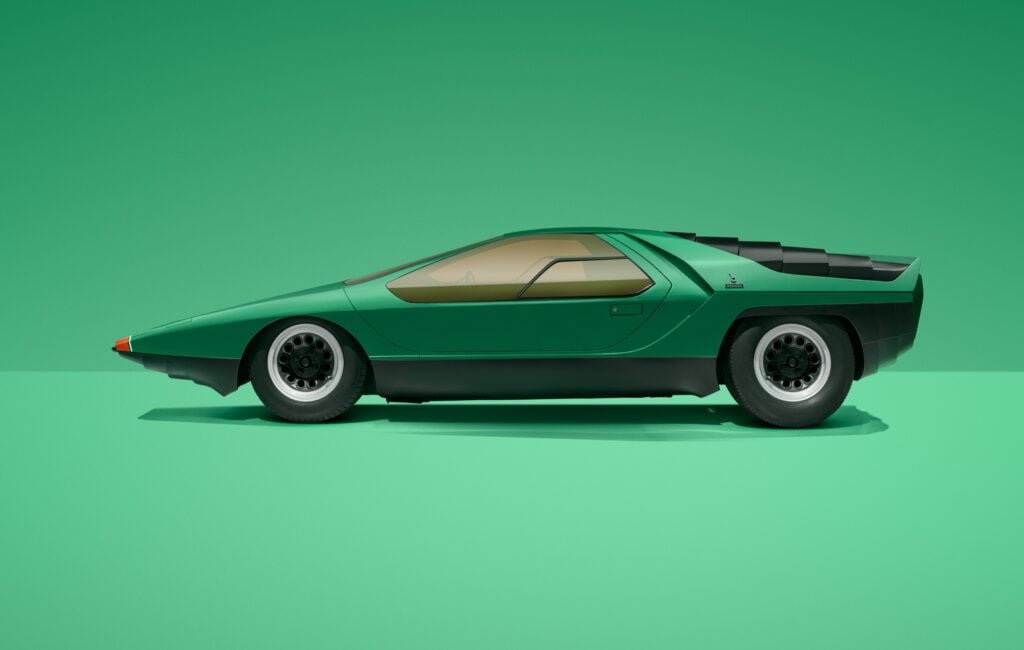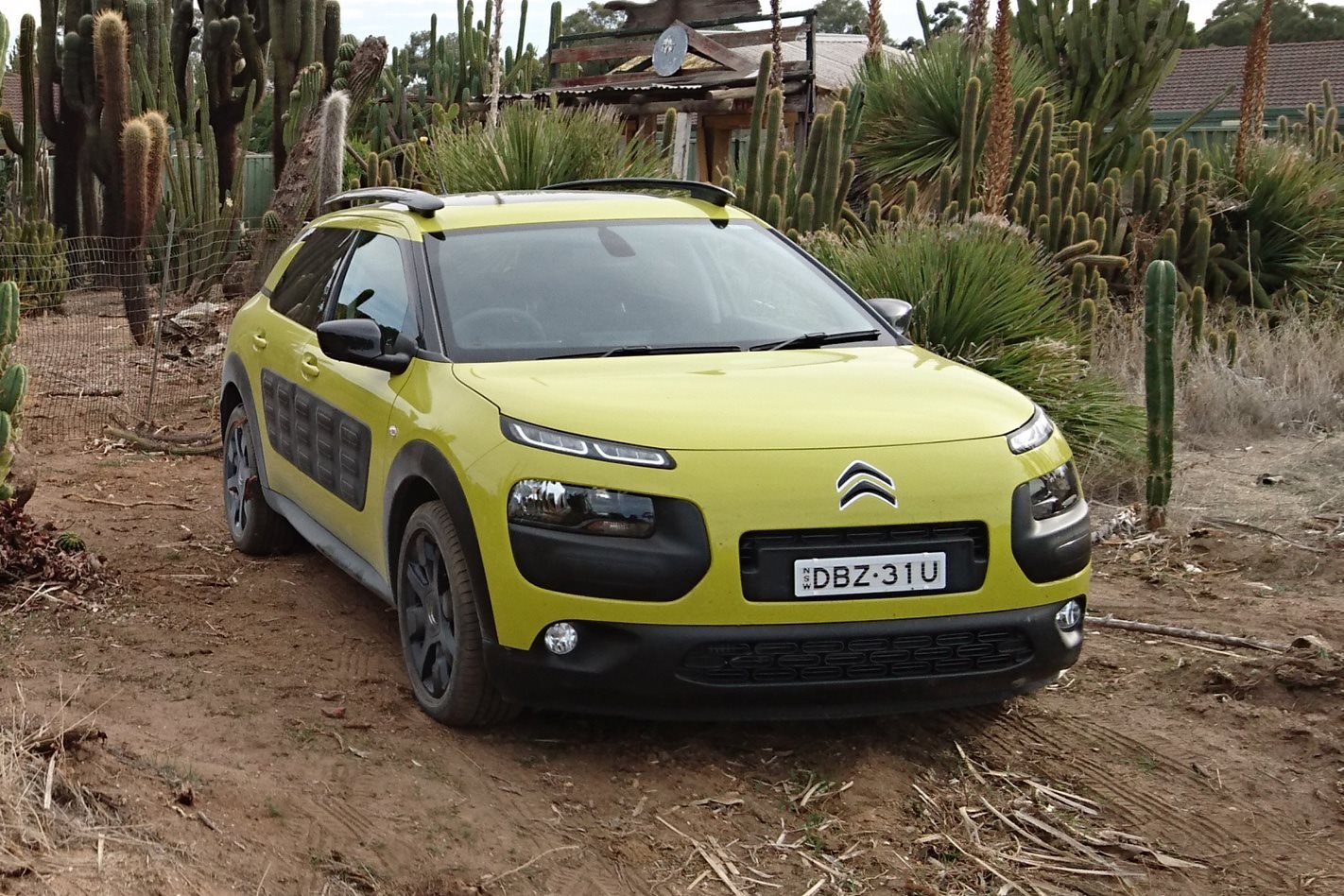
It wasn’t supposed to get here, yet alone end up knee-deep in sand. The 2016 Citroen C4 Cactus that we’ve taken to Little Desert, which straddles the borders of Victoria and South Australia, is a funky, urban SUV based on the C4 hatchback. Yet we’ve taken it, foolishly, to the back of beyond and beached it.
“This is four-wheel drive, yeah?” asked Cristian Brunelli, my co-driver and photographer for the Wheels shoot. “No, it’s basically a C4 on stilts,” I replied. That means it’s a front-wheel drive hatch with higher ground clearance, and hardly intended to go off road. That was well before we parked it for the night, after struggling up a sand hill. Positioned after the fight against sand and gravity, we decided to leave it there for every photograph – repositioning risked beaching it. The next morning, we did exactly that.
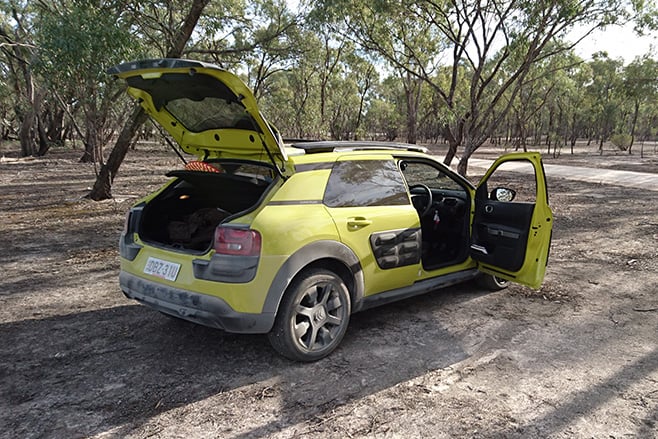
Stranded, with no support car and no other human in sight, we had to find a way out. A battle-hardened Brunelli tried forwards, and backwards, but the front wheels kept digging the Cactus in deeper and deeper. We’d lowered the tyre pressure to give more purchase in an attempt to claw our way out, but to no avail. We even tried pushing it out, but the lack of breakfast after a sleepless night in the desert had us without the required mojo to push the Citroen out of the hole. Imagine, then, getting a serious – and heavy – four-wheel drive stranded compared to the relatively light (1020kg) Cactus.
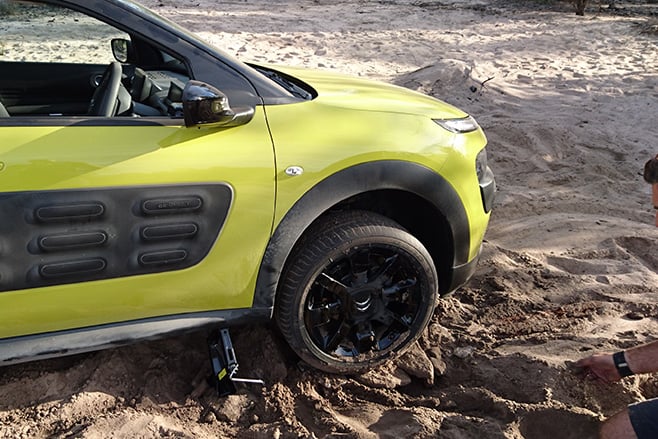
So what did we do? Rocks. Loads and loads of rocks. The abundant supply had us build a small platform on which to put the factory jack. We were thankful that the Cactus comes with a proper jack, instead of relying on a compressor and goo. This means we could lift up each side of the nose, and build a solid base using the rocks at hand. So, each wheel has a rock formation underneath, and we used wood and bark to clear a path out.
This took hours. Then, the debate: now raised onto the makeshift platform, do we drive out, or push it? If we drive it out, and the plan fails, we’ll instantly undo the hours of work we’ve put in. If we push it, perhaps we don’t have enough strength to actually make it out. We’re impatient, itching for a coffee, and decide to just drive it.
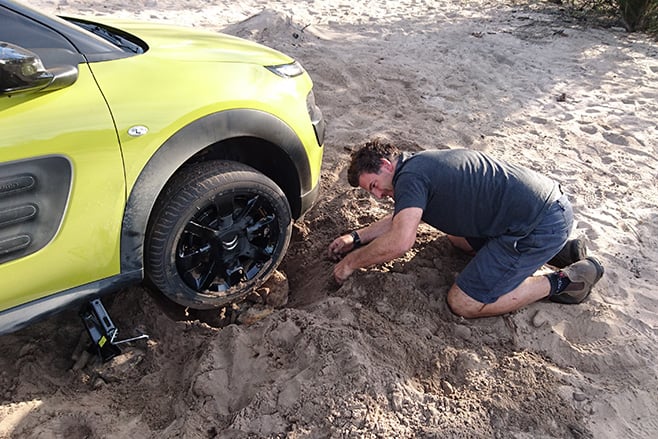
Cristian gets in the driver’s seat. He slowly lets the clutch pedal out and begins a delicate squeezing of the accelerator: the front wheels grips the rocks, the Cactus begins to inch forward – but we’re not sure if it will make the sand ahead that we’ve dug out. Only seconds later, relief washes over us: it not only gets out of the ruts, but through the sand and back onto the firmer road ahead. Cristian fist-pumps the air as I scream, “Victory.”
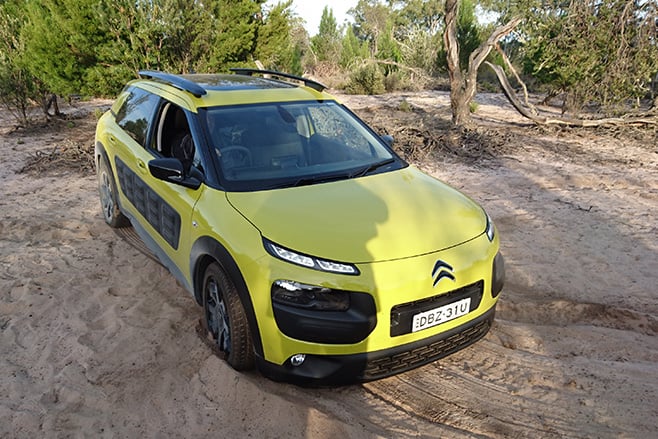
Matt Raudonikis, editor of 4X4Australia, says we did most things right. For sand, getting out is relatively simple. “Straightway, drop the tyre pressures down, turn the stability control off, and that should help,” he says. Take an accurate tyre-pressure gauge with you, as Matt recommends dropping the amount of air on the tyres to around 15psi. He also recommends turning the traction/stability systems off so that power is sent continuously to the drive wheels.
There’s also a faster, smarter way than building the rock supports that we used under the Cactus’s wheels. “‘Maxtrax’ or other types of traction boards are ideal when you’re on your own,” says Matt. “For a couple of hundred dollars, you don’t have to buy any specialist four-wheel drive stuff. Those plastic ramps are a Godsend.”
Looking for more tips? Read about what it’s like to take an off-road driving course.

